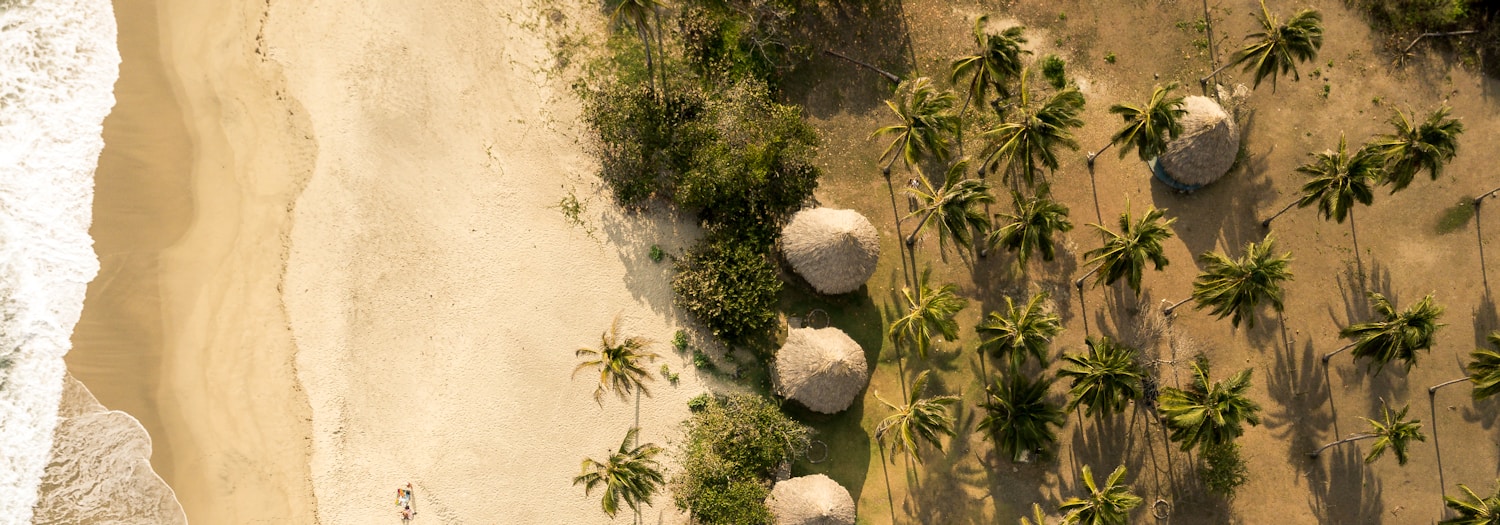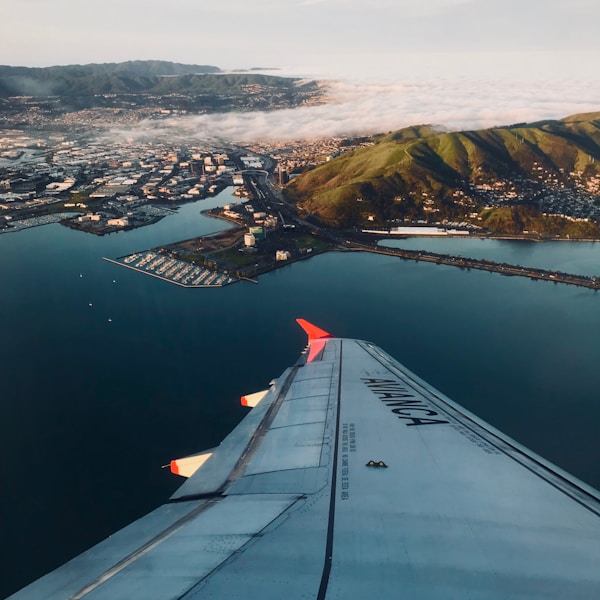-
WHERE TO EAT OUT IN CARTAGENA
CAFES & ICE CREAM
ELY GOURMET
A classy cake shop, Ely is a prized, air-conditioned hideout. The three-layered coconut, vanilla and walnut cake drizzled with Colombia's version of dulce de leche, arequipe (caramel) works wonders with a mid-morning macchiato.
Getsemani, Calle Larga No. 8b-126, Cartagena (00 57 5 664 5707; elygourmet.com)
ÀBACO LIBRERIA & CAFÉ
Cartagena's most cultured café serves up stimulating espressos and cheesecake to a bohemian crowd of writers, photographers and artists. Feed your brain with something from the café's excellent literary collection - a new copy of Nobel Laureate Gabriel Garcia Marquez' Love in the Time of Cholera in English or one of the lofty tomes on Cartagena's colonial architecture.
Centro, Esquina Calles de la Iglesia and Calle de la Mantilla. 3-86, Cartagena (00 57 5 664 8290; abacolibros.com)
MILA PASTELERIA
The undisputed queen of the afternoon sugar rush, eponymous owner Mila Vargas earned a black belt in the dark chocolate arts in the cafés of Buenos Aires and Paris. She shipped a winning mix of chic interior design and sassy snacks home to cater to visitors accustomed to a more cosmopolitan version of café culture. Her fame for delivering a different level of candy-covered means you will have to fight the farandula - Colombia's soap star set - for a mid-afternoon macchiato or a slice of Mila's signature Porteño chocolate cake in high season.
Centro, Calle de la Iglesia 35-76, Cartagena (00 57 5 664 4607; mila.com.co)
GELATERIA PARADISO
Maria Nevett's glorious gelato parlour, Gelataria Paradiso pairs French floral boudoir frills with homemade ice cream thrills to create the ultimate place to chill in Cartagena. Perfect for Cartagena's sugar-rush hour - around 15.00 - Nevett's fruity selection is made with 100% natural ingredients including a colourful kaleidoscope of Colombian fruits, zapote, corozo, passion fruit, costeño cherry and lulo as well as organic cacao-rich chocolate treats. For a sensationally refreshing treat, try the sorbet version of the classic Cartagena drink, the Coconut Lemonade.
Centro, Calle del Cuartel Esq with Calle de la Estrella, Cartagena (00 57 5 660 4945; facebook.com/gelateriaparadiso)
RESTAURANTS
EL BOLICHE CEBICHERIA
Talented chef Oscar Colmenares fine-tuned his ceviche skills working in the three Michelin-Star kitchen of Martin Berasategui's eponymous San Sebastian restaurant. He added a few tricks with later stints at Peruvian stalwarts Astrid & Gaston and Rafael Osterling before going solo with his 16-seat Cartagena debut in 2011. Only fish caught by artisanal fisherman gets chopped into the city's best tasting ceviche creations in this petite but perfectly formed diner. Every dish is a well-crafted blend of Colombian tropical fruits, traditional coastal flavours and ultra-fresh seafood. For an explosive, tangy, taste sensation try the spicy tamarind ceviche or the king prawns grilled with local butifarra sausage and quails' eggs.
San Diego, Calle Cochera del Hobo 38-17, Cartagena (00 57 5 660 0074; ticartagena.com/elboliche)
CARMEN CARTAGENA
Carmen serves up serious food for gourmands with high expectations. With a plethora of taste sensations on every platter, Rob Pevetts and his muse Carmen Angel have taken on two al fresco areas and an air-conditioned salon of the contemporary colonial chic boutique hotel Ananda. An array of complicated reductions, accomplished culinary concoctions crafted from top ingredients plucked from every corner of Colombia is prepared with a delicate Asian touch. Everything on the menu is great but the spicy Caribbean prawn tacos, the succulent pork fest and the deconstructed seafood 'cazuela' top the bill. Don't miss the cocktails made with fruits you will have never met before, such as the Granadilla Pisco Sour.
Centro, Calle de Cuartel 36-77, Cartagena (00 57 5 660 6795; carmencartagena.com)
DON JUAN
After passing through the kitchens of San Sebastian's uber-chefs Martin Berasategui, Pedro Subijana of Akelare and Juan Mari Arzak, Latin food lover, Juan Felipe Camacho, set himself up as top dog in Cartagena's culinary circles. Celebrating a K.I.S.S approach to cooking, Don Juan's unfussy style includes the best, grilled octopus in town, a simple yet sublime entrecote and a prawn and lobster risotto that will send you into orbit. If you can't bag a table there's a younger crowd eating equally well next door in his second, more laid-back venture named after his better half, Maria. (Calle del Colegio # 34-60 Local 2, 00 57 316 524 70 46; www.mariacartagena.com)
Centro, Calle del Colegio No. 34-60, L. 101, Cartagena (00 57 5 664 38 57; donjuancartagena.com)
TRATTORIA DI SILVIO
Di Silvio put hip and happening Getsemani on the map for al fresco locals looking to sample the unique atmosphere and street art of Cartagena's thriving cultural quarter. Great thin-crust pizzas, fresh sea bass in lemon sauce and the salmon ravioli with lashings of Parmesan cheese light up the menu. Popularity forced Di Silvio to add an extension carved cleverly from one corner of a former soap factory, the inspired minimalist, open-air architectural intervention has an illuminated tree and live music at its heart.
Getsemani, Calle de la Sierpe con San Juan esquina, 9A-08, Cartagena (00 57 5 660 2205; disilviotrattoria.com)
MAREA BY RAUSCH
Navigate your way through Cartagena's conference centre to discover the city's premier waterfront dining option. Far from the typical canteen grub served up in most corporate hospitality bunkers, Marea by Rausch serves inspired seafood creations by Colombia's most famous culinary double-act, Jorge and Mark Rausch. The ocean-fresh interiors include fishy themed hand-painted walls but the outside terrace wins for romantic trysts with a privileged view of Cartagena's up-lit cupolas. Order the Peruvian-style seafood rice infused with turmeric or the clever, re-engineered fried fish classic.
Getsemani, Centro de Convenciones, Cartagena (00 57 5 654 4205; mareabyrausch.com)
EL SANTISIMO
Federico Vega's culinary institution boasts nearly two decades as one of the city's top culinary destinations. Its saintly reputation has been built on a fusion of Caribbean flavours, flamboyant French flair and tongue-in-cheek religious interiors. Vega earned his gourmet stripes in the cordon bleu kitchens of Paris and London. Order La Santisima Trinidad: king prawn grilled and served in a light coconut-based sauce and served with coconut rice and plantain soaked in the local soft drink Kola Roman.
San Diego, Calle del Torno 39-62, Cartagena (00 57 5 660 1532; elsantisimo.com)
LA VITROLA
It's tough getting a table at this old-school, Cuban-style restaurant when Colombia's heavy-hitting chequebooks are in town. Cartagena's most popular maitre'd Gregorio Herrera has been keeping a strict control on the guest list since the restaurant put the historic centre back on the culinary map in 1999. The city's fast-moving gourmet offering has left La Vitrola's menu feeling a little jaded but the 'jukebox's' intoxicating mix of live Cuban song, mean mojitos and popular tucker makes this a compulsory stop on the authentic Cartagena experience.
Centro, Calle el Baloco 2-01, Cartagena (00 57 5 664 8243)
LA PERLA
Plenty of Peruvian pretenders have tried to muscle in on Cartagena's ceviche scene in recent years but La Perla - the first to put Cocina Novoandina on the menu in La Heroica - still takes some beating. Inexpensive, slick interiors and lip-smacking ceviches and tiraditos are the trademark but don't miss out on Lomo La Perla, a sirloin steak served with a Roquefort-laced sauce on a bed of creamy mushroom rice or the slow-cooked, suckling pig.
Centro, Calle de Ayos No. 4-42, Cartagena (00 57 5 664 2157; ticartagena.com/laperla)
-
WHERE TO DRINK IN CARTAGENA
BARS
EL BARON CAFÉ & LIQUOR
Good-looking locals love to get the evening off on a well-heeled foot mingling with out-of-towners in this small but perfectly formed speakeasy on the Plaza San Pedro. Cartagena's standout mixologist, Noah Matthies, applies the alchemist touch mixing local infusions with a refined selection of spirits to a bang-up-to-date soundtrack that hits all the right notes for well-traveled hedonists.
Centro, Plaza San Pedro Claver 31-7, Cartagena (00 57 5 664 3105; elbaron.co)
DEMENTE TAPAS BAR
Owner Nicolas Wiesner's rocking chairs and Cuban cigars took Cartagena's coolest district, Getsemani, to another level when he opened his trendy bar, Demente, in the Plaza de la Trinidad in 2013. With a delicious mix of top tapas, high design, brilliant drinks and the city's friendliest bar staff, Demente has pulled a cultured crowd of knowing locals and hip out-of-towners into the heart of happening Getsemani.
Getsemaní, Plaza de la Trinidad, Cartagena (00 57 5 664 3105; ticartagena.com/demente)
MALAGANA CAFÉ & BAR
Design-centric sisters Diana and Maria Carolina Herrera helped put Getsemani on the map when they opened their stylish hangout in late 2011. Eclectic tunes, cocktails made with a scintillating selection of Colombian fruits and a lively rooftop terrace draw a trendy crowd. The friendly hosts throw Cartagena's best street party to celebrate the bar's birthday in the first week of December.
Getsemani, Calle Tripita y Media 31-55 (00 57 5 660 1360)
CAFÉ DEL MAR
Sitting pretty on the historic walls on Cartagena's western tip, the Baluarte Santo Domingo was built to repair the damage done by Sir Francis Drake. Three centuries later, Café del Mar has weaved its way into Cartagena's rich history as the undisputed spot to take in the sunset. The 17th-century fortifications, uninterrupted views of the sun sliding into the Caribbean and all-year-round breezes underpin the bar's enduring appeal with an international crowd not scared off by the bar's New York prices.
Centro, Baluarte Santo Domingo, Cartagena (00 57 313 853 2535; cafedelmarcartagena.com.co)
BAZURTO SOCIAL CLUB
DJs and live bands keep the playlist fresh and local at this hip resto-bar in the heart of Getsemani's golden triangle of late-night drinking dens. Soak up the city's Afro-based musical heritage with a sweaty mix of Champeta, Telapia, Cumbia and Reggae. Brush up on your salsa moves with free dance classes on Wednesday nights. Live music at the weekends.
Getsemaní, Av del Centenario, Cra 9 30-42, Cartagena (00 57 5 664 3124; bazurtosocialclub.com)
EL LABORATORIO
A welcome addition to Calle Media Luna, Cartagena's busiest nocturnal thoroughfare, El Laboratorio's slick mix of rum-based cocktails infused with Colombia's tropical fruits, DJ sets and unfussy interiors that don't obliterate the house's republican heritage, keep Cartagena's hipsters happy on Wednesdays and weekends.
Getsemani, Calle de la Media Luna 10-20, Cartagena (00 57 318 8364877)
DONDE FIDEL
An ideal spot to get your nocturnal bearings, this legendary bar tucked behind the Clock Tower has been dishing up classic salsa beats beneath the city's historic walls for three decades. Owner Fidel Leottau's open-air bellwether is perfect for a little street theatre and some world-class people-watching while you plot your evening over a fairly priced cold beer or a bottle of rum.
Centro, Between Plaza de los Coches and Plaza de la Aduana, Cartagena (ticartagena.com/dondefidel)
LA MOVIDA
Rub shoulders with the city's beau monde in stylish surrounds. The strict filter at the door makes for a good-looking crowd that would be confined to the catwalk in most other countries. The international playlist in the open-air patio offers some respite for gringos tired of being mocked for their lame salsa skills. Get your name on the door here.
Centro, Calle Baloco 2-14, Cartagena (00 57 5 660 6126; ticartagena.com/lamovida)
CAFÉ HAVANA
The 'World Famous' Cafe Havana transformed perceptions of the rundown district Getsemani by luring a ritzy crowd off the beaten track to enjoy live salsa sets by a brilliant 12-piece band, cracking mojitos and a deliciously sweaty atmosphere.
Getsemani, Corner of Calle de la Media Luna, Calle Guerrero, Cartagena (00 57 310 610 2324; cafehavanacartagena.com)
EL CASTILLO DE SAN FELIPE
The most formidable fortification built by the Spanish to defend their stronghold in the Americas, the San Felipe castle took slaves 220 years to complete. Explore the complex maze of tunnels and learn about the city's most famous military battles with English and French pirates.
Pie de la Popa, Avenida Arevalo, Cartagena (00 57 5 666 4790; fortificacionescartagena.com)
PALACIO DE LA INQUISICION
A glorious palace built for the Spanish Inquisition houses a macabre collection of replica torture instruments and a small exhibit of the city's history. The palace's impressive salons are also used for fine art exhibitions.
Centro, Plaza de Bolivar, Cartagena (00 57 5 664 7381)
LA PRESENTACION CASA MUSEO ARTE Y CULTURA
A former convent and school, the Casa Museo is a hidden gem. The sprawling property in San Diego is home to art exhibitions, antiques and a farmers' market once a month.
Centro, Calle Estanco del Aguardiente 5 -63, Cartagena (00 57 317 675 7135; ticartagena.com/lapresentacion)
MUSEO DEL ORO
A charming colonial house on the Plaza Bolivar rescued by Colombia's central bank, the Zenú gold museum gives insight into the pre-Colombian culture of the Caribbean.
Centro, Plaza de Bolivar (00 57 5 660 0778; banrepcultural.org/gold-museum)
GETSEMANI
Cartagena's fiercely traditional barrio maintains a strong link to its rich history through the colourful characters that have lived in the same houses for more than three generations. Soak up a unique atmosphere on Sunday when the historic walls on Avenida Pedregal become a 17th-century Shea Stadium for a baseball and salsa extravaganza, and visit the studios of artists that have made this district the city's thrusting cultural quarter.
PARQUE BOLIVAR
A statue of Simon Bolivar, the man that liberated the Americas from the Spanish sits at the heart of all Colombian cities. The airy square that takes its name from the great liberator is one of the most democratic spaces left in the historic centre. Play chess or snooze with locals during the day or take in the street theatre in the evenings.
HISTORIC WALLS
Started in 1586 and completed in 1633, Cartagena's historic walls stretch 4km around Cartagena's historic centre, San Diego and Getsemani. At sunset couples use the parapets formerly used to fire at pirates for a little intimacy.
TEATRO ADOLFO MEJIA
This former church was converted into a theatre in 1911 to celebrate 100 years of independence from the Spanish. Lovingly restored in 1988, it now hosts the city's most glittering cultural events and festivals.
Centro, Plaza de la Merced 38-101, Cartagena (00 57 5 664 6023; ticartagena.com/adolfomejia)
IGLESIA SANTO DOMINGO & COOPERACION ESPAÑOLA
Cartagena's largest church and the adjacent former convent host the city's most glamorous weddings and cultural events. The Spanish government restored the cloister to be used by the cultural attaché of the ministry foreign affairs to showcase its activities in the region. The courtyard and architecture is now used for poetry readings, concerts, art exhibits and a children's library.
Centro, Plaza Santo Domingo (00 57 5 664 0904)
Tickets for most activities can be booked in advance.
-
WHERE TO SHOP IN CARTAGENA
HOME
CASA CHIQUI
This Ali Baba cave in the historic centre is the go-to retail destination for the biggest wedding lists in town. There's Mexican ceramics, Indonesian lamps and jewellery from Jordan. But if you have room for just one big item in your suitcase it should be the rugs and cashmere hammocks weaved by Colombian design house Hechizoo. This is the only place Jorge Lizarazo stocks his creations in Cartagena.
Centro, Calle de la Universidad 36-127, Cartagena (00 57 5 668 5429; casachiqui.com)
ART
NH GALERIA
Norha Haime's Cartagena extentions to her gallery in New York showcases some of Colombia's greatest talents including the gilded tapestries of Olga de Amaral, paintings by Alejandro Obregon and sculptures by Nadin Ospina and the politically charged work of home-grown local artist Ruby Rumie. The gallery has been instrumental in fuelling Cartagena's burgeoning art scene with a hand in organizing events such as the first International Biennial of Contemporary Art in early 2014.
Centro, Playa de la Artilleria, 33-36, Cartagena (00 57 5 664 0561; nhgaleria.com)
EMERALDS
LUCY JEWELRY
Colombia is the world's largest producer of emeralds. Jeweller Lucy Sanchez has built a formidable reputation delivering high quality stones set in sleek designs with elegant price tags. She doesn't pay commission to hawkers, preferring to pass the savings on to her customers.
Centro, Calle Santo Domingo 3-19, Edificio Cuesta, Cartagena (00 57 5 664 4255; lucyjewelrycartagena.com)
FASHION
ST. DOM
Cartagena's first designer destination showcases Colombian brands from high-end fashion, art and interior design. Hip menswear brand Juan Project has a great line in tropical shirts while other picks include the intricate jewellery designs of Claudia Trejos and a collection of great coffee table books of the city.
Centro, Calle Santo Domingo 33-70, Cartagena (00 57 5 664 0197; stdom.co)
GIFTS
THIS IS CARTAGENA - THE SHOP
Stocking the best local products for socially conscious visitors, The Shop, carries work by local artists, organic coffee produced in specialist farms in the north coast of Colombia and socially responsible craftwork that ranges from colourful handmade hammocks from San Jacintoi and the Guajira to hand crafted leather bags by JJ Leathersmith.
Calle Estanco del Aguardiente 5 -63 (00 57 5 660 0969; ticartagena.com/theshop)
BOOKS
ÀBACO LIBRERIA & CAFE
Flick through a strong collection of books on the best art, photography and architecture in Cartagena or lose yourself in an English version of one of the Nobel Laureate Gabriel Garcia Marquez's extensive bibliography with a cup of joe. For an inside glimpse of the author's Cartagena try Love in the Time of Cholera or Love and other Demons, both set in the city that inspired so much of his work. Catch poetry readings and other intellectual gatherings every Wednesday evening.
Centro, Esquina Calles de la Iglesia and Calle de la Mantilla. 3-86, Cartagena (00 57 5 664 8290; abacolibros.com)



















